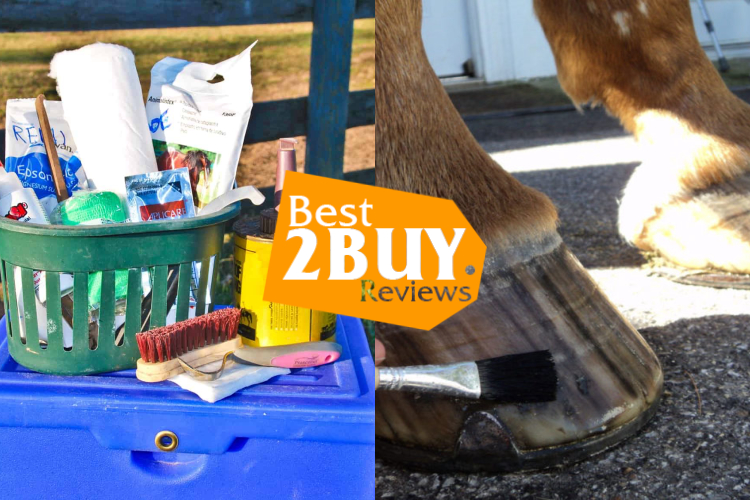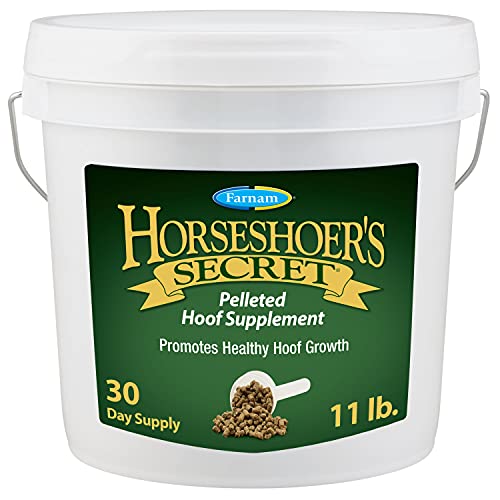Comprehensive Guide to Horse Hoof Care Products: Nurturing the Foundation of Equine Health

- 1. Comprehensive Guide to Horse Hoof Care Products: Nurturing the Foundation of Equine Health
- 1.1. Understanding the Equine Hoof
- 1.2. Importance of Horse Hoof Care Products
- 1.2.1. Prevention of Common Hoof Ailments
- 1.2.2. Maintaining Optimal Hoof Moisture
- 1.2.3. Supporting Hoof Growth and Strength
- 1.2.4. Addressing Hoof Imbalances and Irregularities
- 1.2.5. Enhancing Performance
- 1.2.6. Pain Prevention and Comfort
- 1.2.7. Long-term Cost Savings
- 1.3. Types Of Horse Hoof Care Products
- 1.3.1. Hoof Picks
- 1.3.2. Hoof Brushes
- 1.3.3. Hoof Moisturizers and Conditioners
- 1.3.4. Hoof Hardeners
- 1.3.5. Therapeutic Hoof Boots
- 1.3.6. Hoof Supplements
- 1.3.7. Farrier Tools
- 1.4. Routine Hoof Care
- 1.4.1. Daily Hoof Picking
- 1.4.2. Shoe Inspection
- 1.4.3. Trimming and Shoeing Schedule
- 1.4.4. Maintaining a Clean Environment
- 1.4.5. Balanced Diet
- 1.5. Conclusion
The mobility and overall well-being of horses hinge significantly on their hooves. Ensuring a horse's health, comfort, and performance requires diligent attention to proper hoof care. Utilizing products specifically crafted for this purpose is crucial in maintaining hoof health. This comprehensive guide delves into an array of horse hoof care products and their significance in safeguarding the vitality of your equine companion.
Understanding the Equine Hoof
Before delving into the importance of hoof care products, it's essential to understand the complexity of the equine hoof.
Anatomy of a Horse's Hoof:
- Coronary Band: Positioned at the upper edge of the hoof, the coronary band plays a crucial role in generating the horn that forms the hoof wall.
- Periople: The periople, an outer layer of the hoof, acts as a protective covering on the hoof wall. It regulates moisture levels in the horn and is secreted by the perioplic ring situated above the coronet.
- Hoof Wall: Composed of a keratin-based substance, the hoof wall is the external layer of the hoof. It serves as a durable protective barrier for the internal structures within the foot. The growth of the hoof, from the coronary band to the toe, takes approximately nine to 12 months. Changes in hoof growth may signal an inadequate diet or indicate underlying health issues.
- Sole: The sole is a robust structure that provides external protection for the sensitive sole beneath it. It possesses a slight concave shape and does not bear weight.
- Frog: Extending from the heel to halfway down the foot, the frog is a protruding triangular structure. Its functions include absorbing concussion, providing traction, and serving as a weight-bearing surface for the foot. The frog also ensures a healthy blood supply to the foot. The grooves on each side of the frog facilitate expansion when it makes contact with the ground.
Importance of Horse Hoof Care Products
Prevention of Common Hoof Ailments
Hoof care products, such as hoof picks, brushes, and cleaning solutions, are instrumental in preventing common hoof ailments. Regular cleaning helps remove debris, dirt, and bacteria that can accumulate in the hoof, reducing the risk of infections such as thrush and abscesses.
Maintaining Optimal Hoof Moisture
The balance of moisture in the hoof is critical for its health. Hoof moisturizers and conditioners are designed to prevent excessive dryness or moisture, helping to prevent issues like cracked hooves. Proper hydration also contributes to the flexibility and strength of the hoof.
Supporting Hoof Growth and Strength
Hoof growth is an ongoing process, and it's vital to support it with proper nutrition and care. Hoof supplements and topical treatments enriched with essential vitamins and minerals contribute to the development of strong, resilient hooves.
Addressing Hoof Imbalances and Irregularities
Horses may develop hoof imbalances or irregularities due to various factors, including conformation and uneven terrain. Specialized shoes and corrective hoof care products, recommended by veterinarians and farriers, help address these issues and promote proper alignment.
Enhancing Performance
Healthy hooves are crucial for a horse's overall performance, whether in sports, work, or leisure activities. Hoof care products, such as therapeutic boots and pads, provide additional support and protection during strenuous activities, reducing the risk of injuries and ensuring optimal performance.
Pain Prevention and Comfort
Unhealthy hooves can lead to pain and discomfort for the horse. Hoof care products that focus on pain relief and comfort, such as hoof boots and padding, play a crucial role in supporting horses with lameness issues or those recovering from injuries.
Long-term Cost Savings
Investing in quality hoof care products may seem like an expense, but it is a proactive investment that can save horse owners money in the long run. By preventing and addressing hoof issues early on, owners can avoid more extensive veterinary interventions and long-term rehabilitation costs.
Types Of Horse Hoof Care Products
Hoof Picks
A hoof pick is a fundamental tool in any horse owner's arsenal. Regular cleaning of hooves is crucial to remove debris, dirt, and manure, preventing infections and discomfort. A good quality hoof pick with a sturdy handle and a pointed end for effective cleaning should be part of every horse owner's grooming kit.
Hoof Brushes
Hoof brushes play a vital role in maintaining hoof health by promoting blood circulation and distributing natural oils. A stiff-bristled hoof brush helps remove loose dirt and debris, stimulates the production of natural oils, and contributes to a shiny and healthy appearance. Regular brushing also allows horse owners to monitor the overall condition of the hooves.
Hoof Moisturizers and Conditioners
Just like human skin, horse hooves can suffer from dryness, leading to cracks and other issues. Hoof moisturizers and conditioners are specially formulated to hydrate and nourish the hoof, preventing dryness and promoting elasticity. Ingredients such as lanolin, beeswax, and essential oils are commonly found in these products. Regular application can help maintain the optimal moisture balance in the hooves.
Hoof Hardeners
Some horses may have hooves that are naturally soft or prone to cracking. Hoof hardeners are designed to strengthen the hoof structure by promoting the formation of stronger horn tissue. Ingredients such as formaldehyde or tannins are often present in these products. It's important to follow application instructions carefully to achieve the desired results without causing harm.
Therapeutic Hoof Boots
In cases of injury or chronic conditions, therapeutic hoof boots provide support, protection, and comfort. These boots are designed to protect hooves from excessive wear, provide cushioning, and promote healing. They are particularly useful for horses recovering from laminitis, abscesses, or injuries and can be used during turnout or riding.
Hoof Supplements
While external products play a crucial role, ensuring proper nutrition is equally essential for hoof health. Hoof supplements, rich in biotin, zinc, and other essential nutrients, support the growth and quality of the hoof horn. Consultation with a veterinarian can help determine the right supplement for your horse based on its individual needs.
Farrier Tools
Regular visits from a qualified farrier are essential for maintaining healthy hooves. Farriers use specialized tools such as nippers, rasps, and hoof knives to trim and shape the hooves. While not products per se, the skills and tools employed by a farrier are integral to a horse's hoof care routine.
Routine Hoof Care
To ensure your horse's hooves remain in optimal condition, it's essential to follow a routine hoof care regimen:
Daily Hoof Picking
Take a few minutes each day to use a hoof pick on your horse's feet. This simple task helps remove dirt and debris, preventing the onset of conditions like thrush. Additionally, regular picking provides an opportunity for a close inspection, checking for any abnormalities such as loose shoes, cracks, or bruising. Ensure the frog feels firm yet supple when touched.
Shoe Inspection
If your horse wears shoes, inspect each one daily for signs of wear and tear. Look out for risen clenches, pinching around the bulbs of the heel, or overgrown and misshapen feet. Detecting loose shoes is crucial, as they can lead to slipping or tripping, resulting in potential injuries.
Trimming and Shoeing Schedule
Stay proactive in scheduling regular farrier visits to prevent the development of hoof problems. Shod horses typically require attention every four to six weeks, while unshod ones can go every six to ten weeks.
Maintaining a Clean Environment
Exposure to wet or dirty conditions increases the risk of hoof infections. Whether your horse is in a field or stable, maintaining a clean environment is crucial. Regularly muck out wet or soiled bedding in the stable, and in the field, provide a hard-standing area to minimize exposure to mud during wet weather.
Balanced Diet
Ensure your horse receives a balanced diet, especially if they are on a high-fiber forage diet. Biotin, naturally occurring in grass, is vital for healthy hooves. Horses with ample grazing access usually obtain sufficient biotin. However, those with restricted grazing or poor-quality hooves may benefit from a biotin supplement. Consult your vet for personalized advice based on your horse's specific needs.
Conclusion
Taking a comprehensive approach to maintaining the health of your horse's hooves includes a blend of routine cleaning, grooming, and the application of specific products. Dedication of time and effort to your horse's hoof care is a valuable contribution to its overall health and lifespan. It's essential to seek guidance from a veterinarian or farrier to receive personalized recommendations tailored to your horse's unique requirements. By employing proper care techniques and utilizing suitable products, you can secure robust and healthy hooves for your equine partner, ensuring a lifetime of vitality and contentment.











